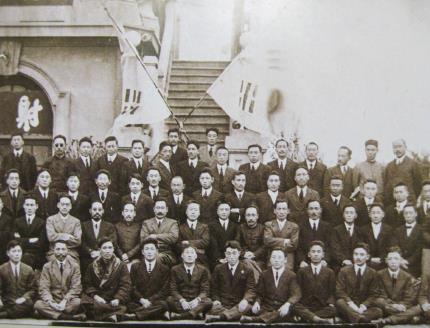
The March First Movement and the Korean Provisional Government in the Context of World History
he year 1919 was a time of transition in world history. World War I that broke out in Europe in 1914 went on for five years until it ended in November 1918. To arrange post-war settlements and establish a system of peace, the Allied Powers hosted a peace conference in Paris in 1919. President Wilson of the United States suggested national self-determination as a principle to guide the establishment of a peaceful system. Meanwhile, the Russian Revolution occurred in 1917 during the height of World War I, overthrowing the Tsarist regime and giving rise to the communist Soviet Union. As a communist state, the Soviet Union supported and sought solidarity with smaller, weaker nations seeking liberty from oppression. Through this process, some colonies of defeated nations actually managed to achieve independence.
Koreans engaged in various activities domestically and abroad to take advantage of changing international circumstances for Korea's independence. Among such activities, those of the Sinhan cheongnyeondan, or the New Young Korean Men's Association formed in November 1918 in Shanghai, proved to serve as a major catalyst for carrying out independence movements in a new dimension. To demand Korea's independence, the Sinhan cheongnyeondan sent a Korean representative to attend the Paris Peace Conference. The association's members also recognized the need to carry out a massive demonstration to appeal to the international society that Koreans unanimously desired independence and were capable of functioning as an independent state. The association dispatched members to Korea as well as other countries in search of a way to launch a consolidated movement for independence. Accordingly, a group of Korean students studying in Tokyo, Japan announced in the name of "Joseon cheongnyeon dongnipdan" a declaration of Korea's independence on February 8, 1919. Hearing news that young Korean men made such a declaration abroad prompted catholic, protestant, and cheondosim leaders in Korea to collaborate on locally announcing another declaration of independence under the name of thirty-three Korean representatives. These independence declarations were followed by others made in west Jiandao, north Jiandao, Primorye, and the United States and culminated in a nationwide demonstration throughout Korea calling for independence. The series of declarations for Korea’s independence was therefore an act of solidarity between Koreans based inside and outside Korea.
Kim Gi-seung (Professor, Soonchunhyang University)